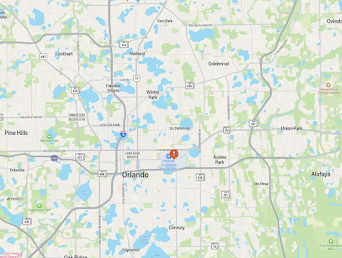First Aviation Downburst-Caused Fatality Since 1994?
To my knowledge, prior to Friday, the last downburst-caused aviation fatality was the result of the crash of US Flight 1016. That crash occurred on the northwest side of Charlotte-Douglas International Airport (KCLT for meteorologists and pilots) on July 2, 1994. It killed 37 people.
Below is the the Doppler wind data for the time of the accident.
That enviable record may have ended Friday evening when a downburst-caused wind gust flipped a small airplane awaiting takeoff at Orlando's Executive Airport at 4:58pm EDT. The airport's wind measuring equipment clocked a gust of 62 mph. The question is, "What caused the gust?"
Terminal Doppler Weather Radar (TDWR) was developed in the 1990's to help bring an end to what was the #1 cause of fatal airline crashes from the 60's to the 90's. One of the TDWR's was installed to protect Orlando's International Airport (where the airliners land). However, its coverage extends northeast to include the city's Executive Airport and that data is below.
Below is a map of the location of the Orlando Executive Airport.
The oval represents the location of the airport and the arrows the direction of the wind. The diverging arrows are the signature of a downburst. It appears the downburst was right over the airport at the time of the mishap. The TDWR is south of the airport and green colors are winds toward the radar and reds away. The highest wind speed I can find is about 53 mph but I'm confident that is because the radar been is centered about 500 feet above the ground -- and it is measuring winds at that altitude -- and the strongest downburst winds were closer to the ground.
If you choose to go to the link and read the article about the accident, you'll find a "high wind warning" was said to have been in effect for the airport. While that may have been the case, I wonder if it was a "wind shear" warning triggered by an algorithm in the TDWR's software that goes directly to the control tower? Regardless, the National Transportation Safety Board will sort all of this out.
In any case, this tragedy illustrates that downbursts remain as potentially dangerous as ever and it is vital to continue training pilots to avoid and, if necessary escape, downbursts.






Comments
Post a Comment